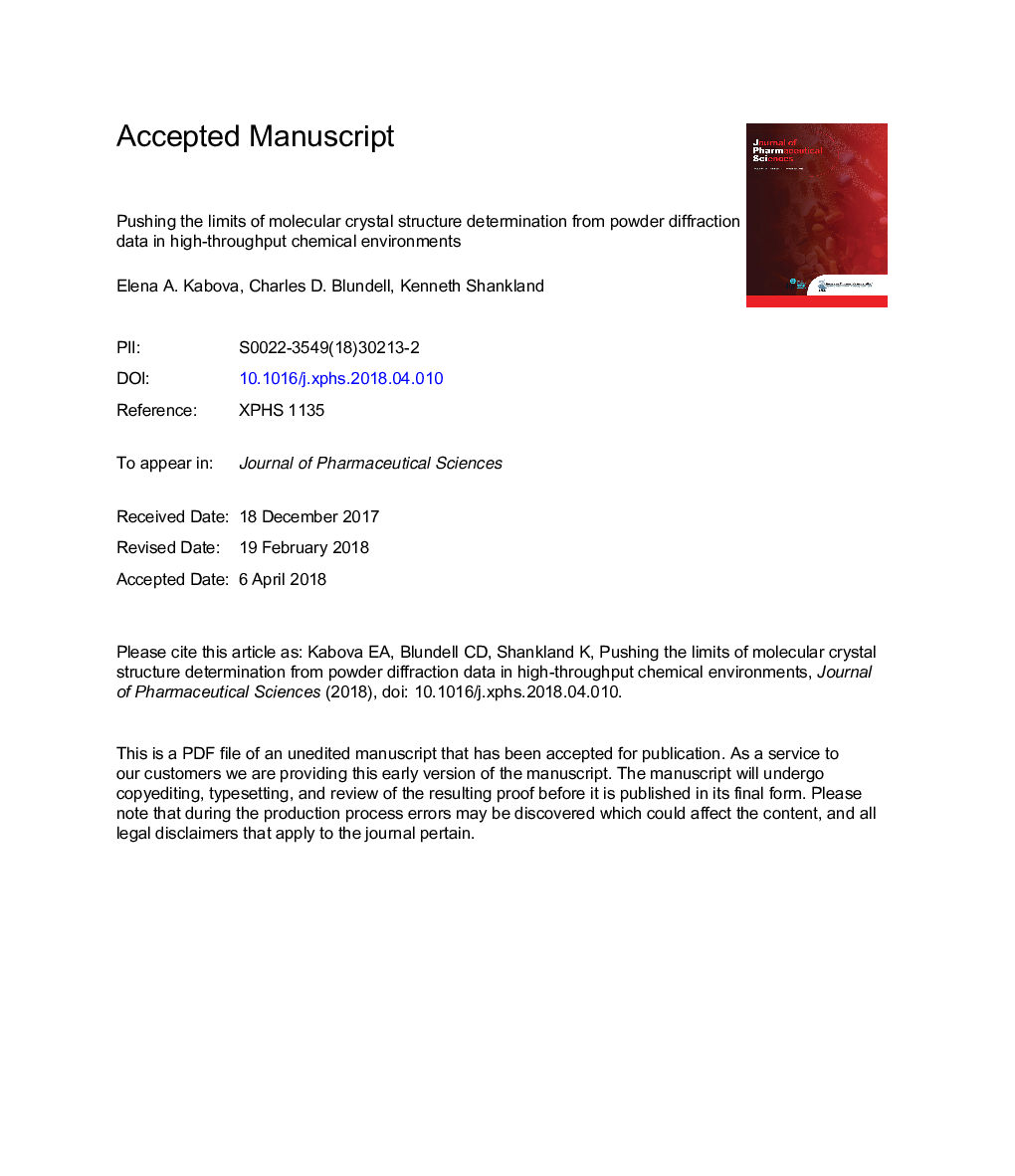| Article ID | Journal | Published Year | Pages | File Type |
|---|---|---|---|---|
| 8513092 | Journal of Pharmaceutical Sciences | 2018 | 20 Pages |
Abstract
Crystal structure determination from powder diffraction data (SDPD) using the DASH software package is evaluated for data recorded using transmission capillary, transmission flat plate, and reflection flat plate geometries on a selection of pharmaceutical compounds. We show that transmission capillary geometry remains the best option when crystal structure determination is the primary consideration and, as expected, reflection flat plate geometry is not recommended for SDPD because of preferred orientation effects. However, the quality of crystal structures obtained from transmission plate instruments can be excellent, and the convenience factor for sample preparation, throughput, and retrieval is higher than that of transmission capillary instruments. Indeed, it is possible to solve crystal structures within an hour of a polycrystalline sample arriving in the laboratory, which has clear implications for making small-molecule crystal structures more routinely available to the practicing laboratory medicinal chemist. With appropriate modifications to crystal structure determination software, it can be imagined that SDPD could become a rapid turn-around walk-up analytical service in high-throughput chemical environments.
Related Topics
Health Sciences
Pharmacology, Toxicology and Pharmaceutical Science
Drug Discovery
Authors
Elena A. Kabova, Charles D. Blundell, Kenneth Shankland,
